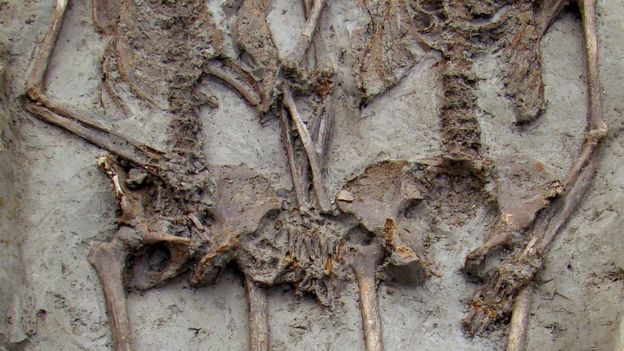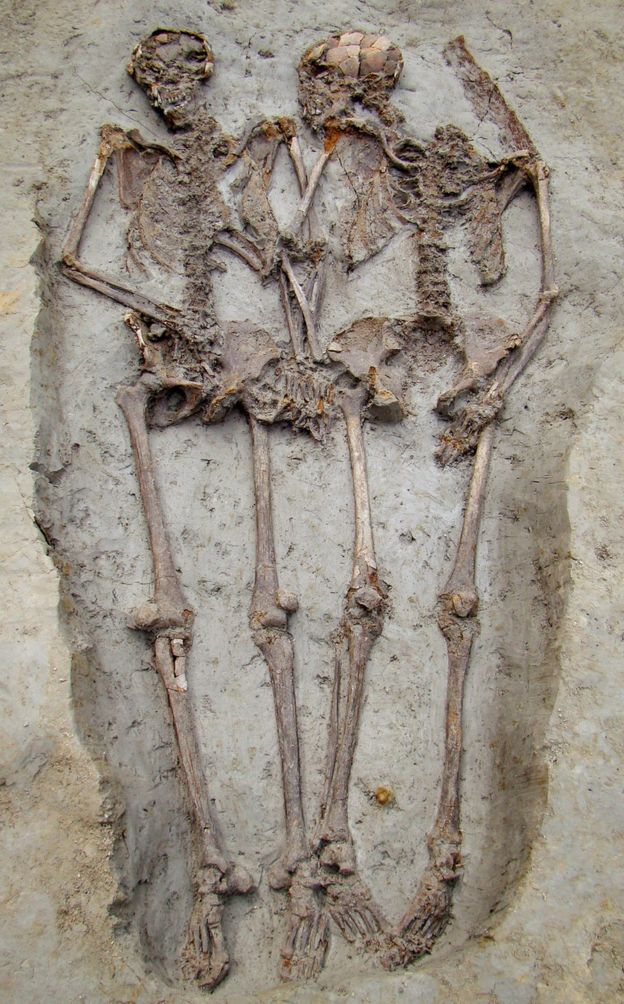Two ancient Roman skeletons have been holding hands for 1,500 years, and they’re both men

The “Lovers of Modena” have been revealed to both be men. (ArcheoModena)
Two ancient Roman skeletons found next to each other in Italy have been revealed by experts to both be men, and they have been holding hands for 1,500 years.
The couple, from the fourth to sixth century AD, were named the ‘Lovers of Modena’ when they were found in 2009 and until now scientists were unable to determine their sex.
But, according to the BBC, a new technique used by researchers from the University of Bologna involving tooth enamel protein has shown that they were both men. Experts said they were intentionally placed with their hands intertwined.

The two Ancient Roman men were intentionally buried holding hands. (ArcheoModena)
While the skeletons were originally named “lovers”, now that they are known to both be male, experts have suggested they could have been “siblings or cousins or soldiers who died together in battle”.
Twitter users have been making fun of the idea of the “platonic cousins of Modena”, especially as ancient Romans are known to have had same-sex relationships.
One wrote: “The BFFs of Modena just doesn’t have that ring to it. No pizzazz.”
The BFF's of Modena just doesn't have that ring to it.
No pizzazz.
— Deadblood was the best ABC Warrior…dont @ me (@The_Only_Doyle) September 13, 2019
Straight people, finding two skellingtons buried holding hands: AND WE SHALL CALL THEM *THE LOVERS OF MODENA*!!
Straight people, discovering the two skellingtons were both male: CoUld ThEy Be SIBliNGS?! *CoUsiNS*?!?! *CoMRadEs*?!?!?! ThE AcTuAL ReLAtiONsHiP ReMaInS A mYsTErY!!!! https://t.co/l7DqigdtNG— Hal Duncan (@Hal_Duncan) September 12, 2019
Gay sex was normal in ancient Rome until Christian rule.
Ancient Roman men are known to have engaged in gay sex, which was considered normal if the man was penetrating as opposed to receiving penetration, and there was even a gay Roman emperor.
They also wrote love poetry about other men, and ancient Roman women wrote poetry about other women. Some reports even suggest there were same-sex marriage ceremonies.
Although a man being penetrated was stigmatised in Ancient Rome, it was the arrival of Christian rule that caused it to be punished by burning at the stake.
Daisy Dunn, the author of Catullus’ Bedspread: The Life of Rome’s Most Erotic Poet, previously told PinkNews: “Sexuality wasn’t categorised in the same way as it is now, so it is hard to put labels on what people identified as, but the history of gay sex, love and poetry is quite fascinating.”

